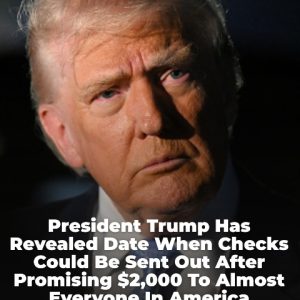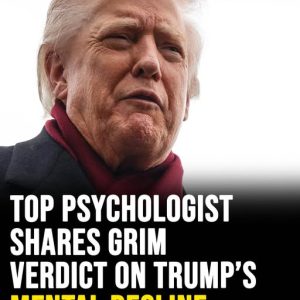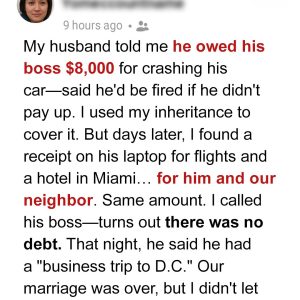Months before the 2024 presidential election, a dramatic warning emerged from a former vice president, cautioning that federal overreach and aggressive executive actions could provoke unrest and challenge constitutional norms. At the time, critics dismissed the statement as partisan rhetoric, a political maneuver designed to influence voters in a heated campaign. Yet, recent events in Los Angeles have cast the warning in a startling new light. Immigration and Customs Enforcement (ICE) conducted large-scale raids targeting deportation priority cases, sparking widespread unrest in a city long celebrated for its sanctuary policies. What was once a pre-election caution now resonates as a real-world example of the tensions between federal authority, local governance, and civil liberties, forcing analysts and citizens alike to reevaluate the line between political prophecy and reality.
The Los Angeles raids began on Friday, June 6th, and immediately escalated into one of the most significant urban protests in recent memory. Demonstrators gathered at the Federal Building in downtown Los Angeles within hours, signaling widespread discontent. The protests rapidly expanded to surrounding neighborhoods, attracting participants from a broad spectrum of society, including immigrant rights activists, local political figures, faith-based organizations, and concerned residents. Demonstrators voiced opposition not only to the raids themselves but also to the broader federal immigration strategy under President Trump’s second term. As the crowd grew, isolated incidents of civil disobedience and property damage occurred, further intensifying public attention and media coverage. By the weekend, Los Angeles faced a crisis of scale, requiring coordination among multiple municipal agencies to maintain order and protect residents.
President Trump’s response marked a turning point in the crisis. Observing the escalating situation from Washington, he issued a series of public statements calling for the immediate arrest of protestors and demanding heightened enforcement measures. More significantly, he authorized the deployment of 700 Marines and mobilized an additional 2,000 members of the National Guard to the city. Such a move represented one of the largest domestic military deployments in recent history for non-natural disaster purposes and drew immediate scrutiny from legal experts and constitutional scholars. The decision bypassed customary consultation with California Governor Gavin Newsom, intensifying tensions between state and federal authorities. Critics argued that the unilateral action constituted federal overreach, while supporters claimed it was a necessary measure to restore law and order amidst escalating unrest.
The legal implications of using military forces in a civilian context are profound. Under the Posse Comitatus Act, federal military forces are generally prohibited from engaging in domestic law enforcement, with exceptions granted only under specific statutory authorities or in the case of declared emergencies. Deploying Marines to Los Angeles raised immediate questions about the boundaries of presidential power and the potential erosion of traditional civil liberties. The mobilization of the National Guard, while legally more flexible due to the possibility of federalization, also provoked debate, particularly because the deployment occurred without gubernatorial consent. Constitutional scholars note that such actions could prompt significant litigation, focusing on the balance between federal emergency powers and states’ rights under the Tenth Amendment. Governor Newsom promptly announced plans to challenge the deployment in federal court, signaling a confrontation that may redefine interpretations of executive authority for years to come.
Beyond the immediate legal and political ramifications, the events in Los Angeles have sparked broader conversations about the role of prophecy, pre-election warnings, and the predictive capacity of political commentary. Many commentators have revisited the former vice president’s statements, noting the uncanny alignment between the forecast and recent events. While some maintain that the remarks were merely partisan rhetoric, the real-world manifestation of large-scale federal intervention, civil unrest, and constitutional tension lends credibility to the notion that political foresight can sometimes precede events with remarkable accuracy. Analysts argue that whether viewed as prophecy or prescience, such warnings serve as critical reminders of the importance of foresight in policymaking, highlighting the delicate balance between enforcing law, protecting civil rights, and maintaining public trust.
As the situation evolves, the broader implications of federal intervention and local resistance remain unclear. Questions persist regarding the appropriate scope of presidential authority in domestic crises, the limits of state sovereignty, and the ability of communities to influence enforcement actions that directly impact residents’ lives. Legal challenges are expected to move swiftly through federal courts, potentially setting precedent for future interactions between federal and state authorities in similar contexts. Meanwhile, public discourse has intensified, with advocacy groups, political leaders, and ordinary citizens weighing in on the ethics, legality, and long-term consequences of aggressive federal intervention in local affairs. This convergence of politics, law, and civic activism underscores the profound complexities that emerge when executive action intersects with deeply held community values, particularly in urban centers with diverse populations and established policy frameworks.
Ultimately, the recent ICE raids and federal military deployment in Los Angeles demonstrate the fragile equilibrium between governance, enforcement, and civil liberties in contemporary America. The events highlight how pre-election warnings, whether dismissed at the time or embraced, can gain new significance as unfolding circumstances illuminate previously underappreciated risks. In this case, the alignment between forecast and reality has reignited debate over the proper exercise of executive power, the constitutional protections afforded to states and citizens, and the broader societal consequences of large-scale law enforcement operations. As legal proceedings unfold and public discourse continues, Los Angeles may serve as a case study in federalism, civil liberties, and the complex interplay of political prediction and governance in the modern era.





